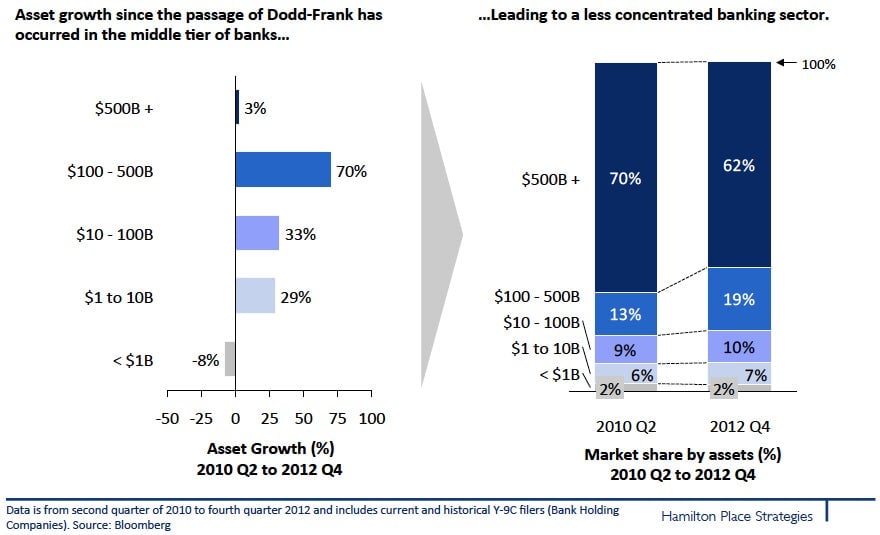Megabanks are still growing after Dodd-Frank, but their slightly smaller competitors are growing much faster
The United States’ biggest banks—the ones that were “too big to fail” during the financial meltdown they helped to cause—have grown even larger since the crisis. The Wall Street reforms of the Dodd-Frank Act, critics argue, clearly aren’t working.

The United States’ biggest banks—the ones that were “too big to fail” during the financial meltdown they helped to cause—have grown even larger since the crisis. The Wall Street reforms of the Dodd-Frank Act, critics argue, clearly aren’t working.
That might be the case, but the real story is a little more complex. Assets at the seven biggest banks like Bank of America, Citibank, and JP Morgan Chase (which all have assets over $500 billion), have grown about 3% from the second quarter of 2010 when Dodd-Frank passed to the end of 2012, according to data from strategy firm Hamilton Place Strategies (HPS).
But the real winners over the same time period have been the 18 medium-large banks with $100-$500 billion under management—companies like Ally Financial, TD Bank, and PNC Financial Services Group—which have grown by 70%. They’ve also increased their market share from 13% to 19%—at the expense of their bigger competitors. Banks with $1 to $100 billion in assets also saw gains.
“These are mostly regional players, maybe entering the national market,” says Patrick Sims, who directs policy research at HPS. He ties this directly to the impact of Dodd-Frank. “Because of regulation there’s more growth coming in at the middle, and that’s because of scale.”
Although the biggest regulatory hammer falls on financial institutions with $50 billion or more in assets, banks of all sizes must adhere to more in-depth reporting requirements—which incurs bigger lawyer fees. Medium-sized banks are in the sweet spot—big enough to absorb the costs of regulatory compliance, but not so big that they attract intense attention like the seven biggest banks.
As we wrote last week, the clear losers are the banks at the very bottom of the size scale with assets of less than $1 billion, which have seen assets shrink by 8% because they’re too small to handle compliance costs.